Saint Lucia
Written by Rick Archer
Last Update: December 2012
Saint Lucia was
our fifth island visit of the trip.
Like the other
islands in the area, Saint Lucia has a long history of
slavery and exploitation dating back to the 1600s.
It
was also one of the most contested islands. In 150
years, Saint Lucia changed hands between the French and the English
14 times!
Someone with an
odd sense of humor nicknamed St Lucia the "Helen of the West
Indies".
This was a dig at Helen of Troy, the much
coveted woman who caused the
Greeks and Trojans to wage war for ten long years.
|
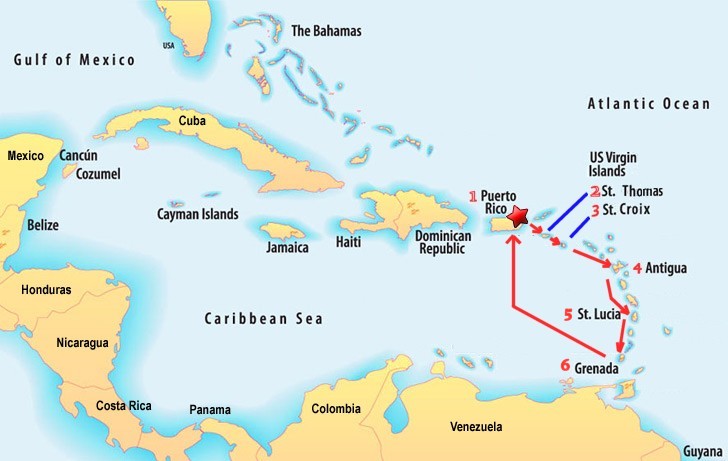 |
It was the
English who won the last battle.
In 1814, Great
Britain took control of the island for good. Today
English is the predominant language and the legal system is
based on British common law. Yes, they drive on
the wrong side of the road. And yes, they still speak a lot
of French.
To this day, St.
Lucia's heritage is split between African, English, and
French.
|
Saint Lucia is not that large.
It is 27 miles north to south and 14 miles wide.
The capital city of Saint Lucia is Castries
(60,263). A third of the island's population lives here.
Saint Lucia is more mountainous than many
other Caribbean islands. Its highest point is Mount Gimie at 3,120
feet.
Two mountains, the Grand Pitons (see Gros
Piton on the map), form the island's most famous landmark. They are
located between Soufrière and Choiseul on the western side of the
island.
Saint Lucia has semi-active volcano. The
Sulphur Springs provide an impressive display of steam, but you
better hold your nose.
Since Saint Lucia is
so mountainous, the majority of the
island is covered with a thick forest. Most of the
population lives in the fishing villages that dot the
perimeter of the island.
Like most of the
Caribbean islands, St Lucia was enslaved for about 150
years. Conditions were so harsh
that almost all the native Carib indians
died. The British resorted to importing African slaves
who proved to be much hardier.
These Africans were also
more difficult to control. In 1795, an army of St. Lucian
freedom fighters defeated the small battalion of British troops
stationed on the island.
For the next four
months, a united front of recently freed slaves and freedom fighters
known as the Brigands forced out not only the British army, but
every white slave-owner from the island.
A year later,
the British Army returned with many more troops.
|
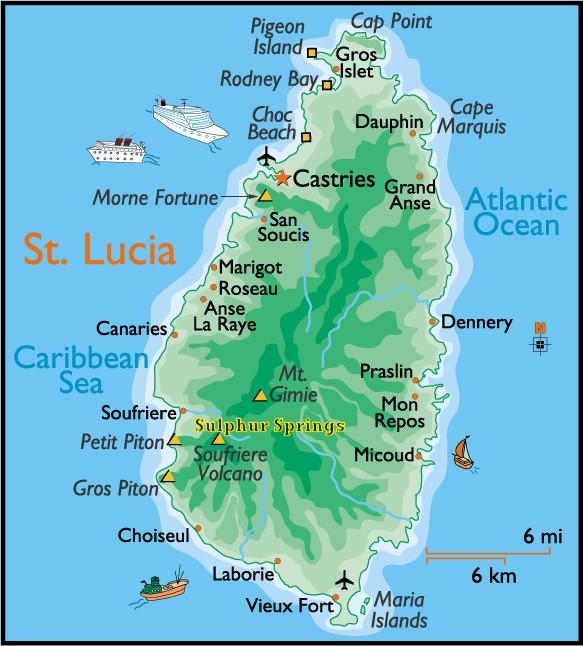 |
The freedom fighters
could not repel this many men.
Soon the British
regained control of the island and imposed ten more years of
slavery.
However, many of the
rebels escaped inland into the thick rain forests. These ex-slaves
lived a guerilla lifestyle in the mountains. They
conducted raids that made life miserable for the army and
the plantation
owners. The British spent ten years trying to track
them down, but the guerillas proved too elusive. Since they
were able to live off the land or off whatever they stole from the
British, there was no base to find them at. Finally the British threw in the towel and
formally ended slavery in 1808.
Today the
population of the island is 90% of African descent.
|
|
|
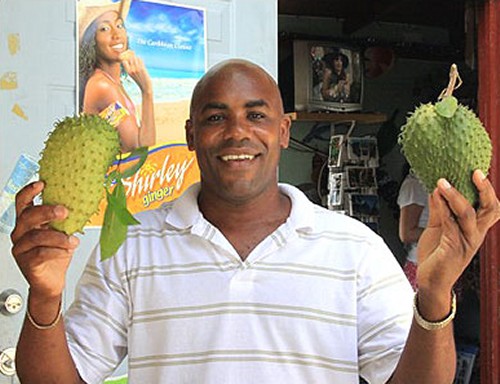 |
Cosol
Mara had done
extensive research about this island. She lined up
a man named Cosol, one of the top guides, to whisk us
around.
As I later
discovered, 'Cosol' is not his real name, but rather his nickname. His real name is Nereus Francis. The nickname 'Cosol' comes from the
French patois name for the sop, the green tropical fruit in
the picture. The sop is often shaped like a heart.
It has a rough green
skin and soft spikes.
As it turned
out, Cosol is a self-made man. From what I gather,
Cosol spent much of his childhood selling this fruit to make
money for his family. He worked his way up from
poverty to create one of the top tour companies on the
island. Cosol told of how as a young man he worked
both as a taxi driver and as a driver for a tour company.
At some point, he took a risk and bought his own car.
He
began soliciting people as they got off the ship. Then
he added an old broken down bus. Then he exchanged it for an
attractive minivan. Then he added an attractive large bus. Then
he
hired some people to assist him... and so on.
|
Cosol has an
incredible personality. I have never met a tour guide
with more charisma than this guy. In addition, he is
extremely hard-working. I noticed he spent every
spare moment returning messages.
Cosol was an
impressive guy.
When Cosol
wasn't busy entertaining us with lively anecdotes, he
spoke like the businessman he is.
He said that
Saint Lucia's economy was above average compared to most of
its neighboring islands. Cosol pointed out that thanks
to the fishing and the fertile soil, there is little hunger
in his country. Anyone who is hungry can catch a fish
or grab a piece of fruit that grows naturally in the forest.
Saint Lucia's economy depends
primarily on revenue from tourism and banana production.
Both sectors are doing very well.
However, these
two sectors are not enough to create jobs for everyone.
The unemployment rate is 20%. This leads to another
problem - rampant teenage pregnancy. When people don't
work or go to school, they relieve their boredom by... well,
figure it out.
I got the
feeling that Cosol cared deeply about these social problems
and was trying to figure out some solutions. I
wouldn't be surprised to see Cosol in an elected office
someday. He has the personality and the natural leadership
ability to pull it off.
|
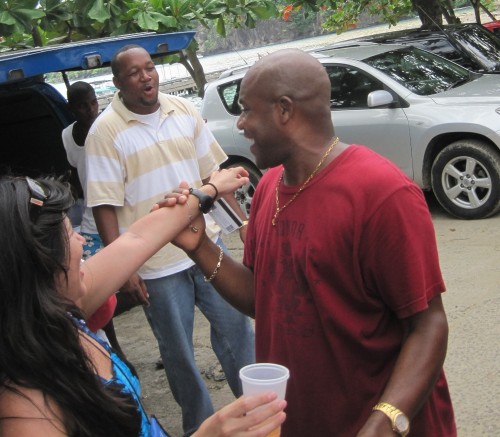 |
|
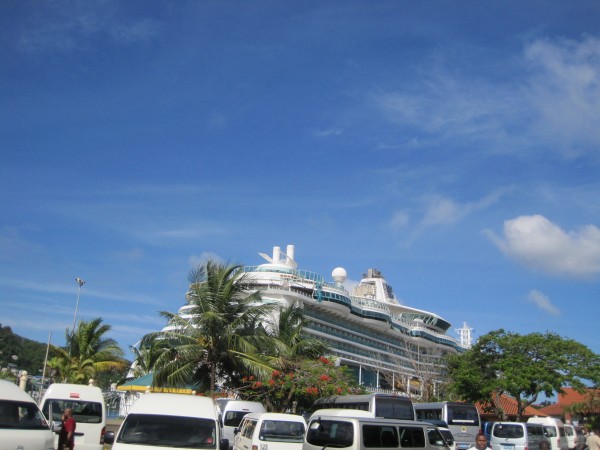
There were
a number of excursion buses waiting for the passengers
|
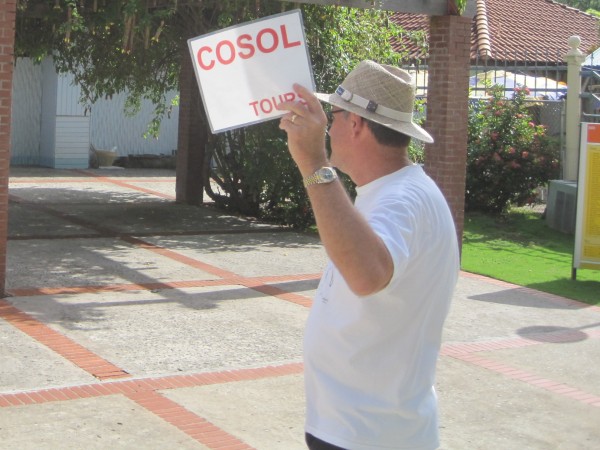
Cosol
immediately put Kurt to work advertising his business
|
|
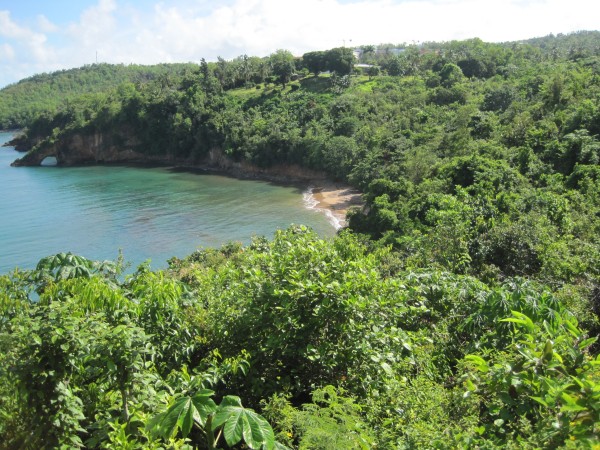
We were
soon out of the city. Cosol pointed out a lovely beach
below
|
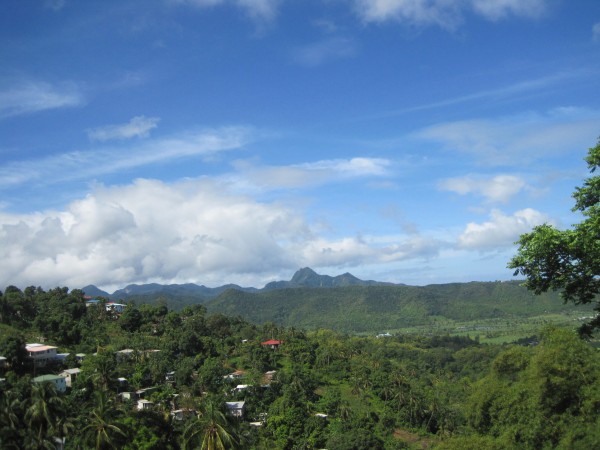
The
terrain is mountainous and heavily forested
|
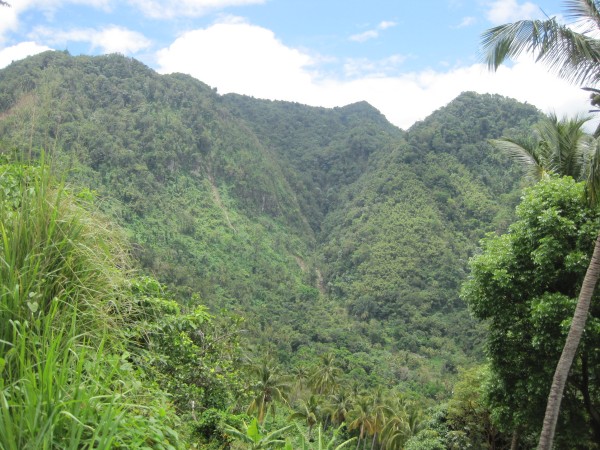
Cosol said
that once his country decided tourism was its bread and butter,
the leaders made a conscious decision to treat its forests like
a national treasure.
|
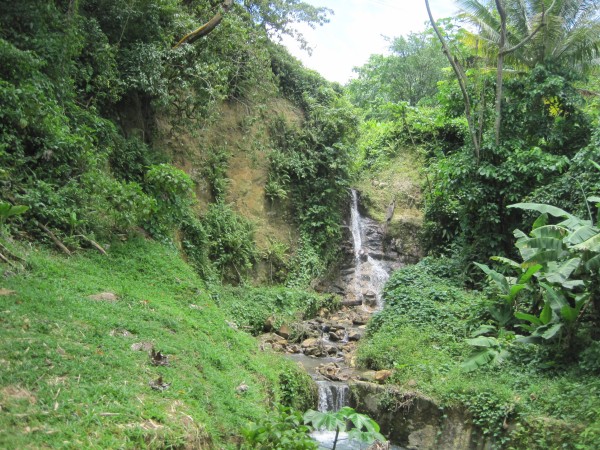
Consequently the size of the St Lucia rain forest is actually
growing. |
The Sulfur Springs are a popular
tourist destination in St Lucia.
One popular feature is the ability
of the
tourists to literally drive up near the edge of the springs.
Note the springs and the road in the same pictures.
At one time,
tourists
were also allowed to walk right up to the edge of the tar pits.
However, in
the mid Nineties, a local tour guide
named Gabriel fell through the crust into
the pit. He
received scalding third degree burns over most of his body.
Those days of
close proximity are over. Viewing is
restricted to a platform 200 hundred feet away.
For his suffering, the tour guide achieved a type of
immortality. His fate is mentioned at every tour. Plus
the Springs are now called Gabriel's Hole.
Sulphur Springs is billed as the "world's only drive in volcano".
However, despite the ease with which tourists can come
visit and the low-level of fear, the volcano is a ticking time bomb.
While doing
research for this article, I learned that the volcano is
still active. It
is supposed to erupt again in about
100 years. When that
happens, depending on the severity, the impact could
wipe out three quarters of St
Lucia.
I am glad I
didn't know this at the time of my visit.
|
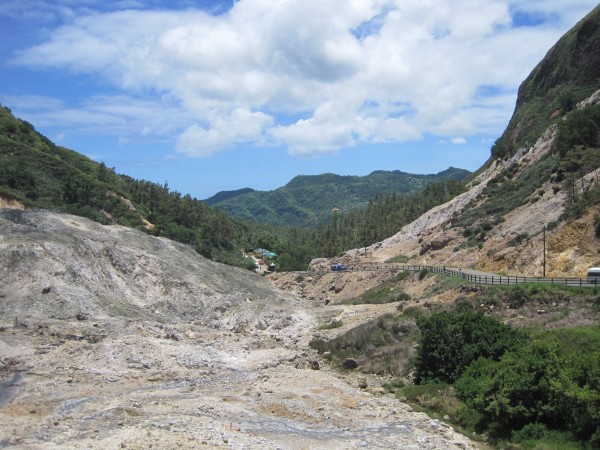 |
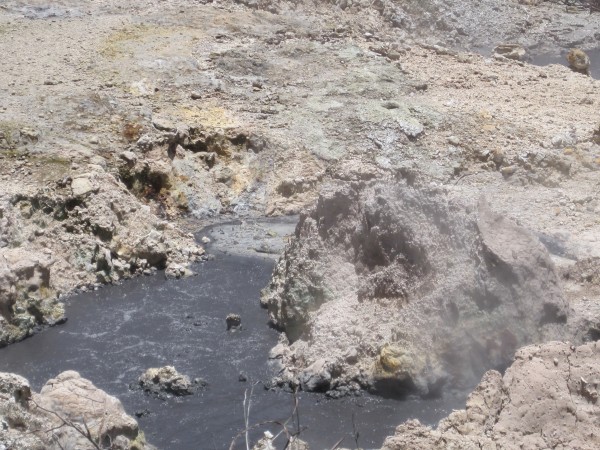 |
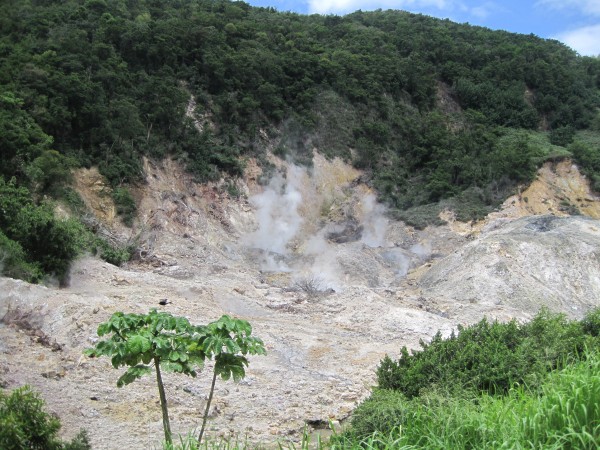 |
|
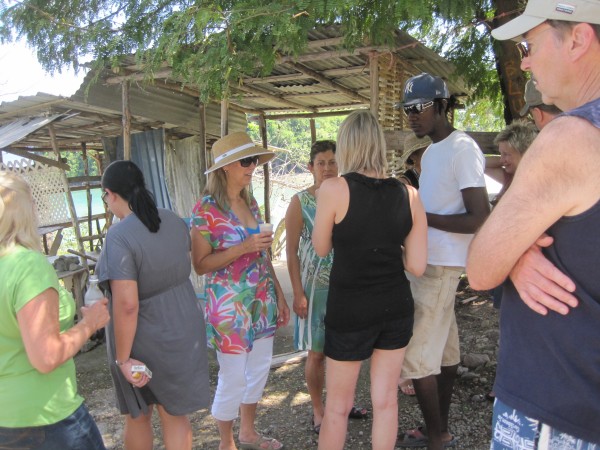
A little
refreshment at Sulphur Springs |
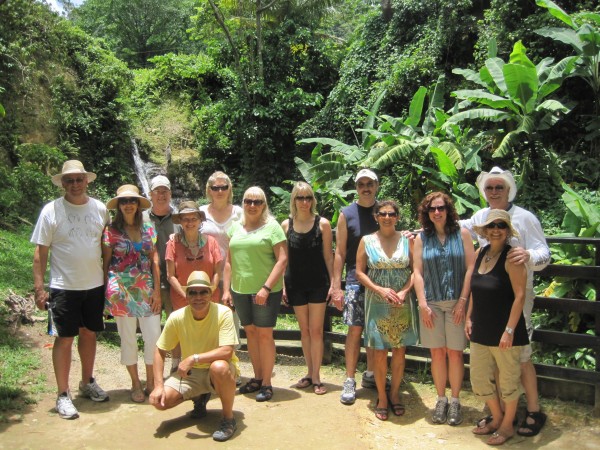
Kurt,
Jean, Joe, Patty, Wendy, Joan, Tiffany, Bruce, Mara, Ann,
Rick, Marla, Zorro in front |
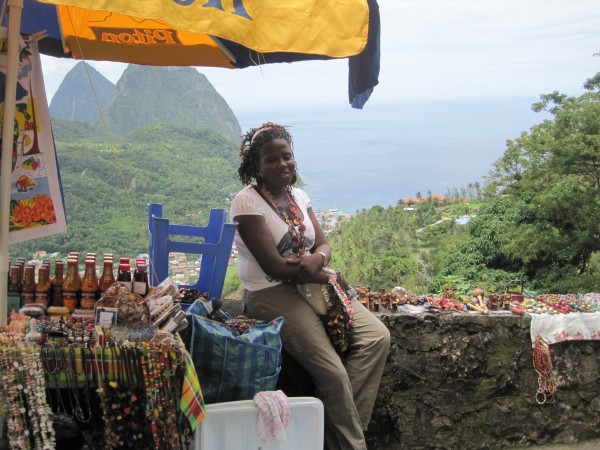
Another
look at the Grand Pitons in the background
|
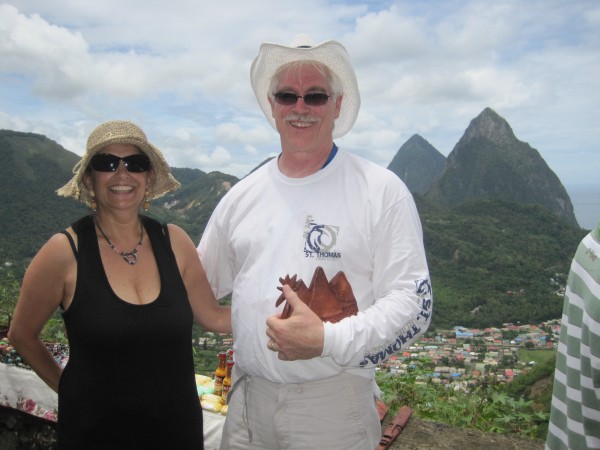
As you can
see, I bought myself a souvenir. Also notice my "St.
Thomas"
tee shirt from a previous stop. We don't give it much
thought, but our tourist dollars play an important role in these
fragile economies
|
Cosol stopped his bus to give us a tour of a
banana plantation.
Bananas are my
favorite fruit. I consume them with great fervor.
However, I learned a devastating secret during this visit.
Each tree produces ONE banana crop in its life cycle.
Once those
bananas in the picture are harvested, they chop the tree
down to make way for another tree. Fortunately, the
root system is preserved. Soon enough an offshoot
automatically grows in a nearby spot to produce its solitary
crop... then it too is chopped down to make way for the next
tree.
Since I am a
born tree hugger, I found it difficult to accept that a tree
has to be destroyed for me to eat a banana.
My life has
never been the same. Although my consumption of
bananas has remained at the previous level, now a little
slice of guilt zaps me every time I peel a banana. I
can't eat a banana without thinking of the tree that gave
its life to give me a banana. Some things I guess I
would rather not know.
I might add that
same soft-hearted nature extends to Christmas trees too.
I hate cutting a tree down just for a month of use.
|
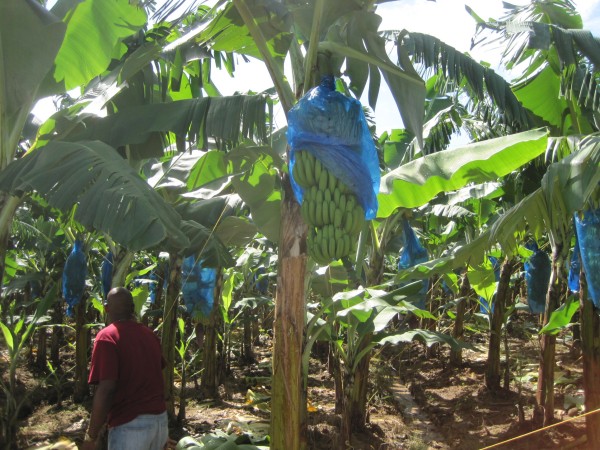 |
| |
|
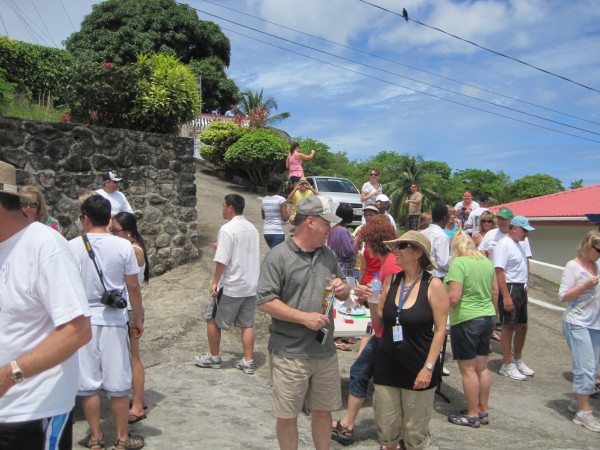 |
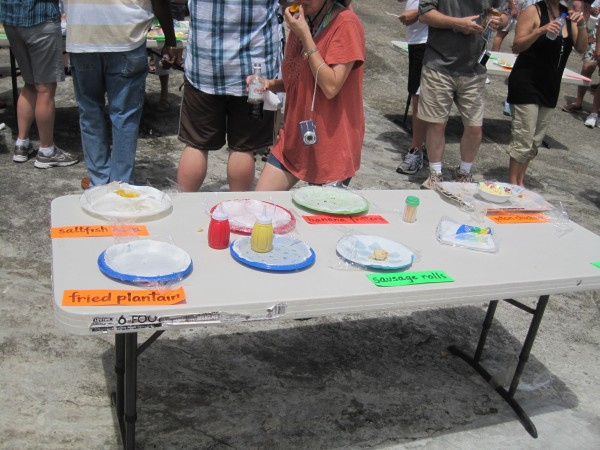 |
| |
|
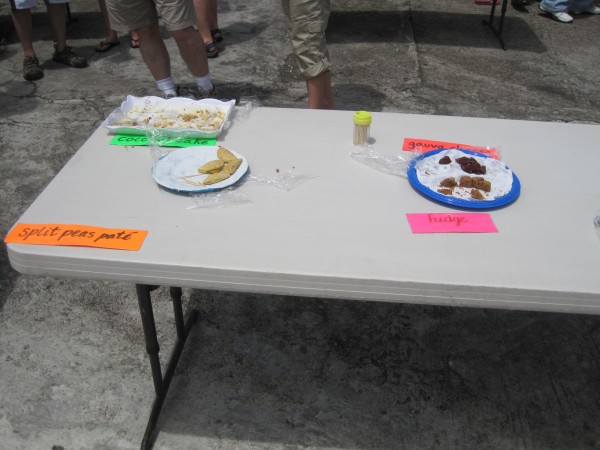 |
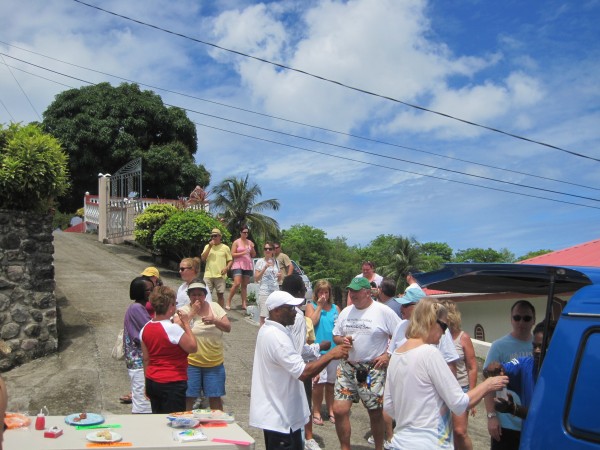 |
| |
|
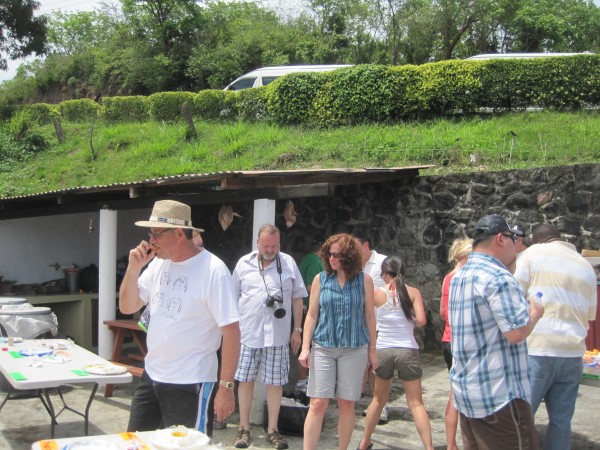 |
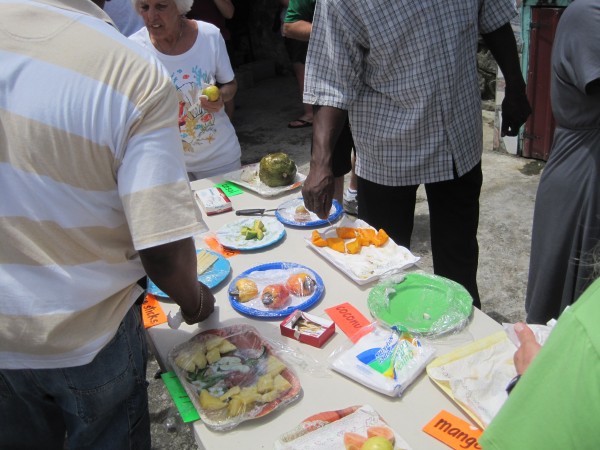 |
|
|
|
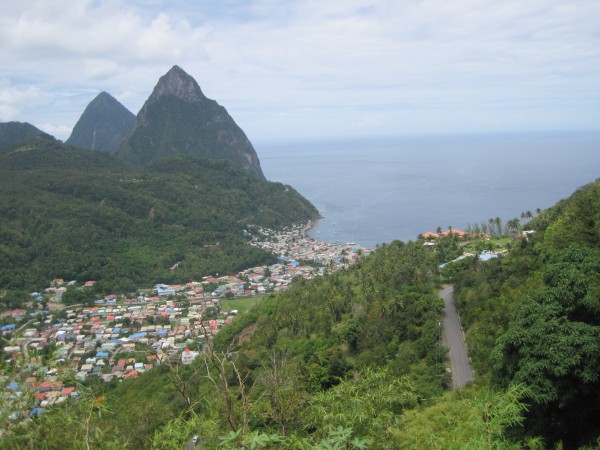
That is
the town of Soufriere, a fishing village. Behind are Gros
Piton and Petit Piton, the giant volcanic plugs that serve as
the national symbol of St Lucia |
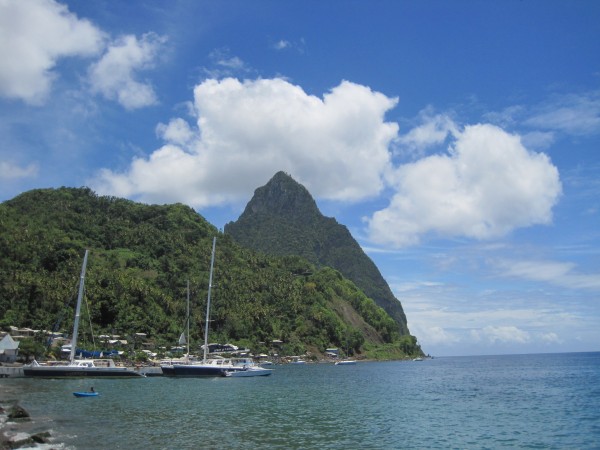
Our next
adventure was a boat ride to get a first-hand look at the Grand
Pitons around that
bend. I will explain what we saw in the next chapter.
|
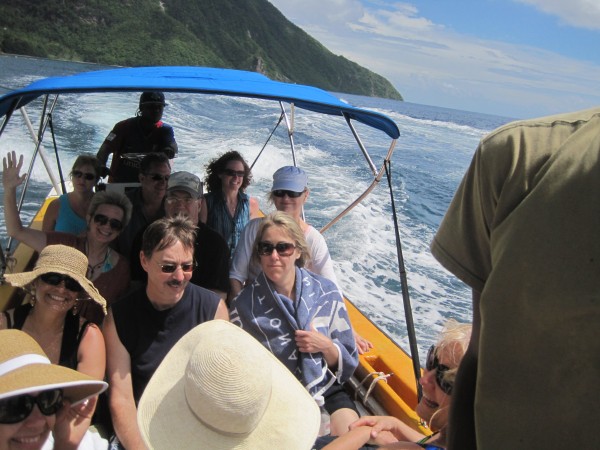
In Soufriere,
we boarded a speed
boat. Here we are headed to the Grand Pitons
|
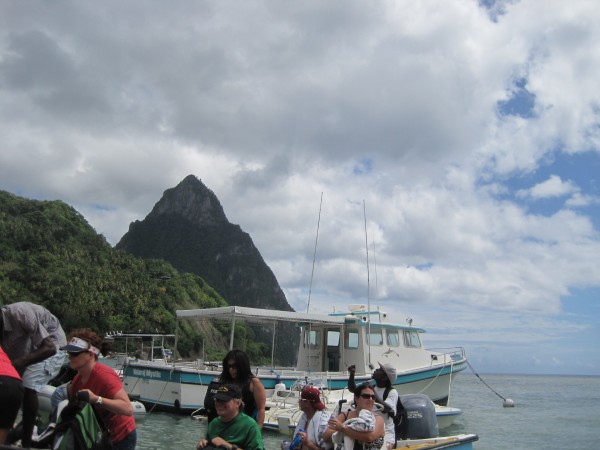
Here we
are returning from our trip. |
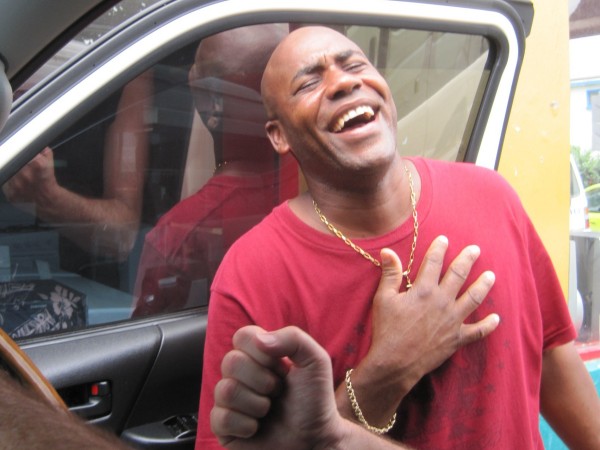
Upon our
return, Cosol declared it was party time. Out came the
rum.
|
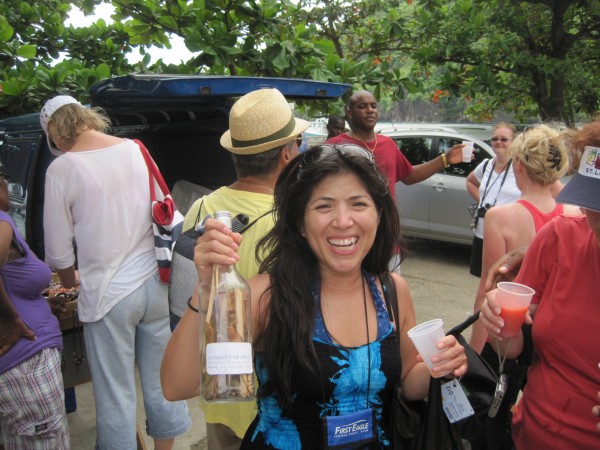
Veronica
used her ample charms to score her very own bottle |

I'm not
sure what Bruce was up to, but he looks happy.
|
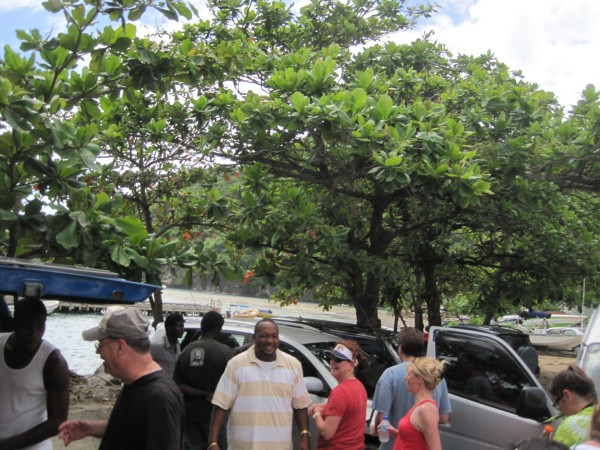
Bruce
wasn't the only one who was happy. The Rum mix had us all
smiling
|
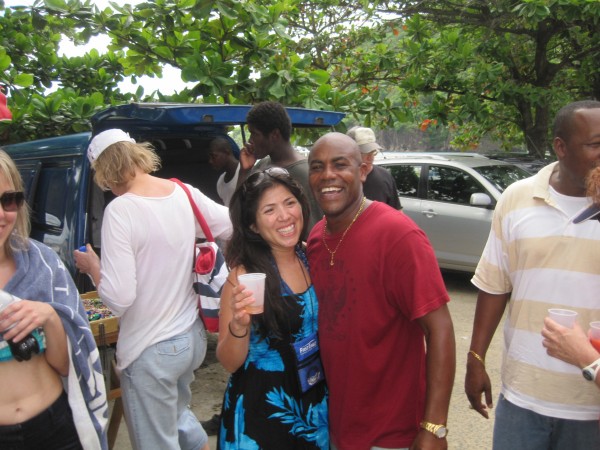
So how did
Veronica get her very own bottle? Hmm. I wonder.
|
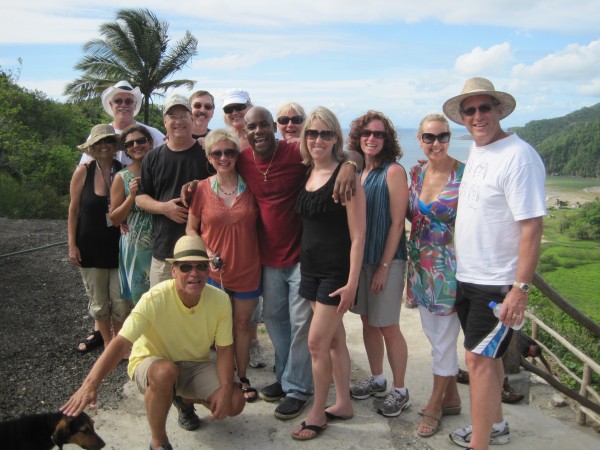
All in
all, a great day in St Lucia. Thank you, Mara |
|